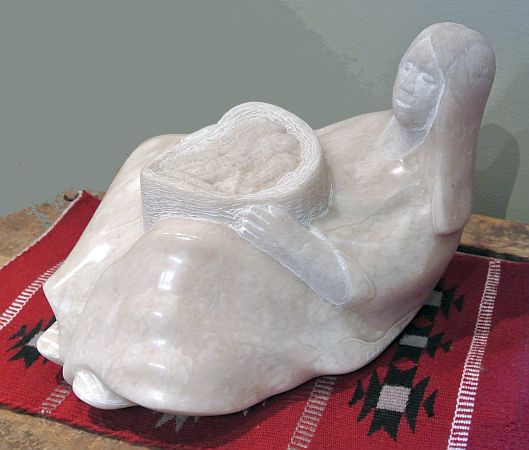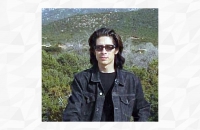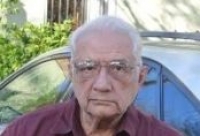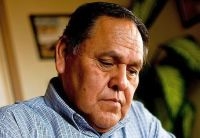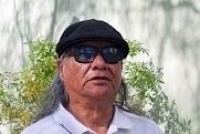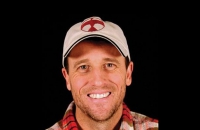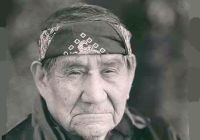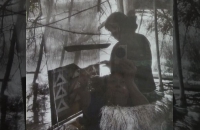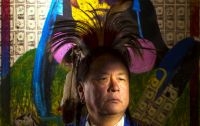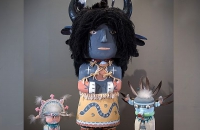”Woman with Basket of Corn” Colorado alabaster sculpture by Native American artist Tex Wounded Face. The one of a kind sculpture is 10” x 7 ½”.
Tex Wounded Face is a Mandan/Hidatsa Indian, born May 9, 1955. Tex states, “My work is contemporary, yet has an individualistic appeal that moves from ancient tradition and metaphor towards a contemporary sculptural interpretation and expression.” Tex’s sculptures are in many major collections and museums throughout the United States. (Deceased 2012)
Call for Shipping
About the artist
Tex Wounded Face
(Mandan/Hidatsa b. 1955- 2012)
(Tex Wounded Face, 57, Scottsdale, Arizona., formerly of Bismarck, North Dakota died July 22, 2012, in Scottsdale)
Tex Wounded Face reads the spirit of the stones as he creates sculptures reflecting the past, present and future of American Indians.
Wounded Face, who is of the Mandan and Hidatsa tribes, worked at the Cathedral Marble and Granite, Inc. in White Town, south of Lebanon and west of Zionsville. It was a job that not only provides money, but allows him to work with granite. He does custom installation of counter tops. He says granite is
the hardest stone and requires expert techniques for artist work. The company lets him use room for a studio to continue his artistic work.
"My mother thought I had a bit of talent," he says. "I was drawn to sculpture. I found my niche. Stone and brass are the mediums I like to work with. To me, stone is the perfect medium for expression of Native American culture. In terms of being relative to the earth, nature's materials. I can read the stone and tell the areas where it's fragile. I know how to cut it."
He was born on the Fort Berthold Reservation in North Dakota. He and his family left the reservation in the relocation of the '50s and '60s. It was a federal government program to move Indians out into the general population. Wounded Face and his family left their reservation to live in Los Angeles, South Dakota and Tempe, Arizona. He was 15 when his mother recognized his artistic talent. She sent him to study fine arts at the American Indian Art School in Santa Fe, New Mexico. He earned enough as an artist to pay his way through college and earn a degree at the Kansas Art Institute.
He was able to stay with his family, unlike many children who were taken from their tribes and forced to go to boarding schools. It is common for people sent to boarding schools to tell stories of severe beatings for speaking their native language or practicing their traditions.
Because of living so many places and traveling a lot, Wounded Face says he has a larger view of people, their beliefs and cultures.
"I have a sense that all are the same. I say that because I have seen many places and people whose beliefs are basically the same. I see a lot of similarities with indigenous people around the world. Some are more secular, but we are all so interlocked. The aborigines of Australia aren't very different from the native people here. Personally, I think we're all related, myself. We all live on earth. We all breath the same oxygen. We all drink the same water."
There is the story of the origin of man that is common in almost all of the tribes and indigenous people throughout the world. It is a story of the major flood in the beginning of life. "They call it Turtle Island. The North American Continent. It is the Mother Earth. They are riding, living on the back of the turtle. The plate shifts and there are all kinds of stories about how they looked at that. The stories are metaphors. Lots of symbolism in stories about different animals. What they meant in terms of people's lives.”
ARTIST STATEMENT:
“As a sculptor, I create works of art which reflect the Native American Indigenous peoples’ experience.
It is my hope that my sculpture will clearly demonstrate and give meaning to the direction in which the Native people and their existence is moving – what it has been and what it is today.
The content of my work communicates through metaphorical imagery, ideals of mythological, spiritual and cultural importance to the Native American people. These values pertain to the heritage and future of contemporary Native Americans and to the understanding of non-Native American people.
It is through the commonality of our human experience that a shared vision can be acknowledged and to enhance the quality and texture of our common journey through life.
Through my sculpture I invite people to become aware of these themes and aesthetics, and to their correlation to the continued evolution of Native American art.
My work is contemporary, yet has an individualistic appeal that moves from ancient tradition and metaphor towards a contemporary sculptural interpretation and expression.”

